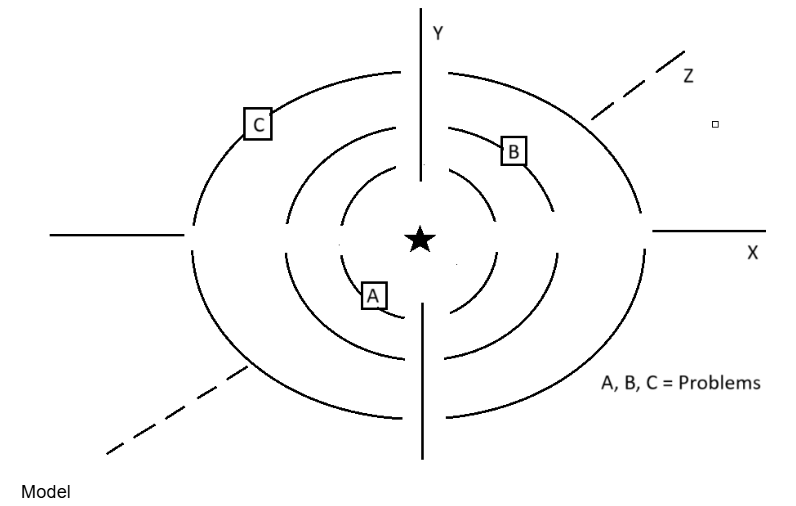Series: Linear Emotion
The Pull of Problems
Written in 2025 | Refined with AI
It is a tradition across cultures that applied wisdom is often associated with sapience, sagacity, or insight. Furthermore, there is also the tradition that new wisdom often emerges when the student surpasses the teacher, as old ways and new perspectives meet in a clash. These moments of tension do not erase the past but refine it, creating a cycle where knowledge is tested, stretched, and reborn. This dynamic has carried wisdom forward - not as a static inheritance, but as a living force shaped by both reverence for what came before and courage to see beyond it.
Across multiple disciplines, whether in abstract theory or the real world, a problem can be understood as the recognition of a gap, obstacle, or conflict that calls for thought, action, or innovation to bridge it. While the arrival of a new problem often stirs uncertainty or unease, the presence of wisdom softens its weight. Wisdom provides perspective—sometimes nulling the intensity of the challenge, other times transforming the initial discomfort into positive emotions like curiosity, confidence, or even gratitude. In this way, the negative charge of a problem is not only neutralized but also becomes an emotional catalyst throughout the problem-solving process.
The gravitational pull of problems can be imagined across an x, y, and z plane, where our immediate attention and efforts are spent navigating the orbits of multiple challenges at once. We are the central star—like the sun—unmoving and unwavering, radiating the energy that holds our system together. The problems we focus on, our accelerations, do not orbit us neatly on a flat sheet; like real planets, they can tilt and wobble, moving above and below the plane on the z-axis as well as shifting along the x- and y-axes. Yet unlike the solar system, where the planets are fixed members of a long-standing family, the problems orbiting us are not permanent. They come and go, shifting in and out of existence, and sometimes even giving rise to new ones as old problems evolve. Just as the sun anchors the solar system, we too act as the center of gravity that pulls our problems into orbit, but the system is never static. Some problems demand our closest attention, circling tightly like Mercury, while others drift farther out like distant bodies with inclined paths. And when we find a solution, the problem does not always disappear—it may simply move outward, lingering on the edges of our orbit. In this way, our personal “sun” remains steady, constantly shaping, pulling, and balancing the problems that define the shifting system of our lives. See the model below.
Within the reservoir of emotions that surface when we encounter problems, not all are harmful—especially when the problem is tied to a positive goal. Planning a wedding ceremony, for instance, can create a flood of small challenges that stir excitement, stress, and joy all at once. The emotions swing like a roller coaster, often intensified when we overthink each detail. Yet just as mathematics distinguishes between real and imaginary numbers, so too can we distinguish between real problems with serious consequences and imaginary problems we generate in our own minds. The former demand clear action, while the latter emerge from thought loops and excessive worry, carrying weight only because we let them. Recognizing this difference can lighten the load, reminding us that not every problem is as heavy as it first appears.
Our attention can be thought of as a pendulum, swinging back and forth between focus and distraction, urgency and calm. At times, the pull toward a pressing problem gives it momentum, driving the pendulum sharply to one side. Other times, when the mind is at ease, the swing slows and settles closer to center, where balance and clarity are found. Just as a pendulum never stays fixed in one position, our attention is always in motion—swayed by emotions, environment, and the gravity of our thoughts.
Together, our central system has a natural, almost instinctual way of balancing the pull of each problem that arises. This is enhanced with the force of wisdom, which in an abstract way gives momentum to how we think each and every day. Wisdom steadies the orbit of our challenges, ensuring that even as problems shift in and out of focus, we remain anchored at the center. It is this quiet force that transforms uncertainty into clarity, turning the constant motion of life into a rhythm we can not only endure but also grow from—a rhythm where problems are not just burdens, but catalysts that shape the wisdom guiding us forward.
The sun spilled through the wide glass window of the coffee shop, warming the table where I sat with my half-empty cup. Outside, cars drifted past in a steady rhythm, their movement strangely detached from the quiet bubble I found myself in. For a moment, time loosened its grip - seconds stretched, the world slowed, and the usual noise of worry faded into silence. There were no problems pressing on my mind, no sharp edges demanding attention. Just sunlight, motion, and the calm certainty that whatever storms might come tomorrow, I would meet them. Everything felt manageable, softened by the simple assurance that life had a way of carrying forward, and so would I.
